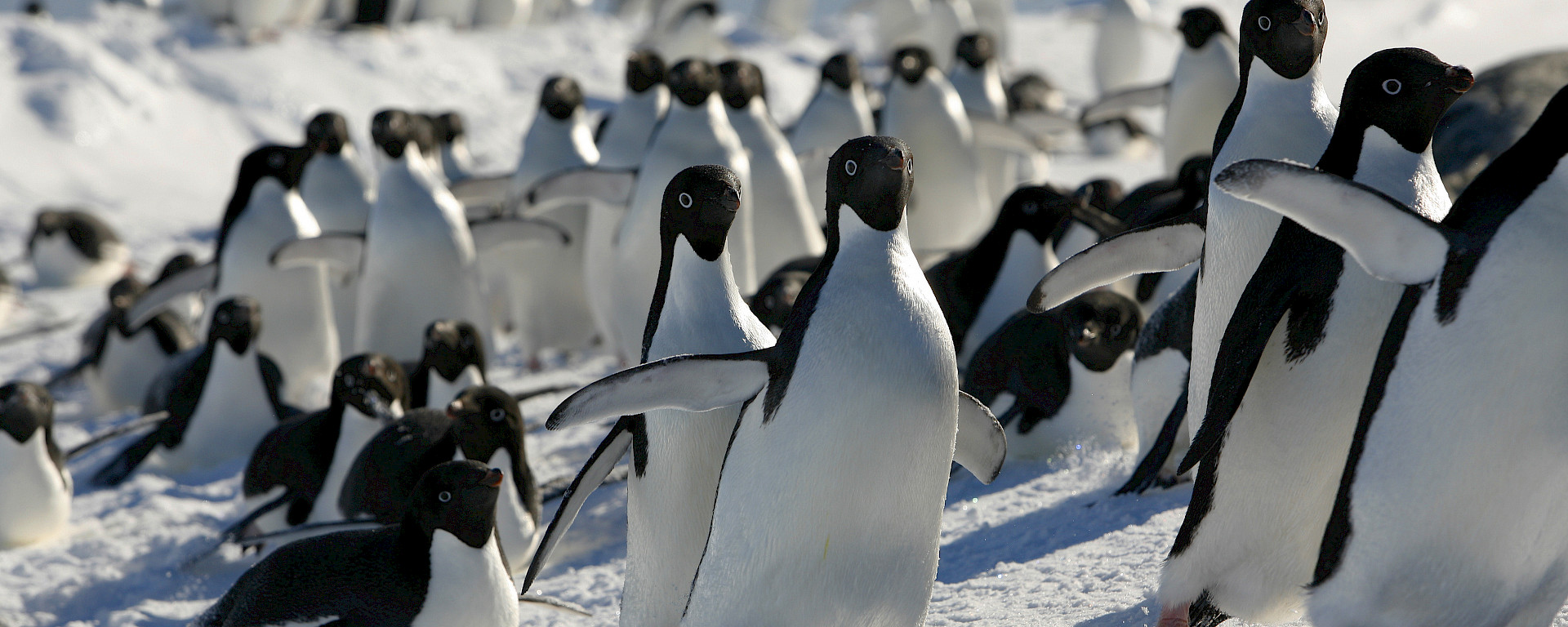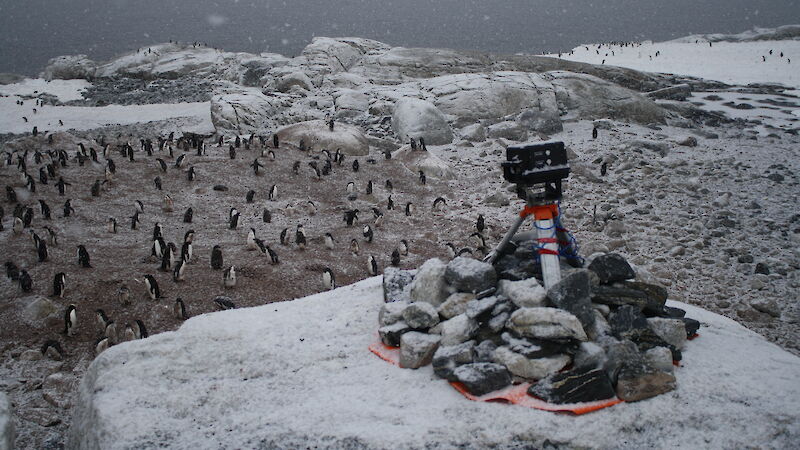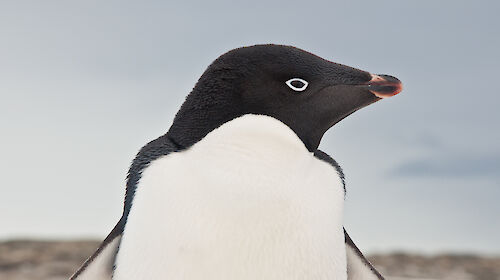For the first time, Adélie penguins living on the West Antarctic Peninsula have been captured on camera returning to their summer breeding colonies in winter.
In East Antarctica, however, winter-time camera surveillance has shown breeding colonies near Australia’s Casey and Mawson research stations remain empty, as their summer-time residents forage at sea.
The research, led by Dr Caitlin Black of the University of Oxford, and involving Australian Antarctic Division seabird ecologists, Dr Louise Emmerson and Dr Colin Southwell, shows that time-lapse cameras can be used to monitor wildlife year-round, in areas that are largely inaccessible during winter.
Dr Southwell said the cameras provide new insights into penguin ecology and behaviour, and the impact of local environmental conditions on these.
“This research has shown that cameras overlooking colonies and near-shore sea ice, allow us to accurately measure the ice and its influence on Adélie penguin presence or absence at colonies over winter,” he said
The research team installed a camera on the Yalour Islands on the West Antarctic Peninsula, overlooking three sub-colonies of Adélie penguins, and seven cameras across the Mawson and Casey regions. Each camera took one photo at midday each week over three winters.
The cameras captured penguins returning to the surveillance site on the Yalour Islands throughout winter, with peak numbers in mid-winter, when day length was shortest. Numbers were also higher when there were extreme high or low levels of near-shore sea ice.
“The presence of birds at the Yalour site during the shortest winter days may be because of reduced visibility for navigation at sea, or they were finding prey directly offshore, or avoiding predation in the low light conditions,” Dr Black said.
In East Antarctica, by contrast, no birds were seen returning to their summer breeding sites. This suggests that widespread, consolidated sea ice in East Antarctica, in some cases extending up to 1000km from the coast, prevents Adélie penguins returning to their colony sites in winter.
Further research is needed to tease out the relationship between sea ice extent and the return of penguins to land during winter. Future research on the West Antarctic Peninsula should also consider the age of returning birds and whether they have come from other colonies.
The research is published in PLOS One today.




